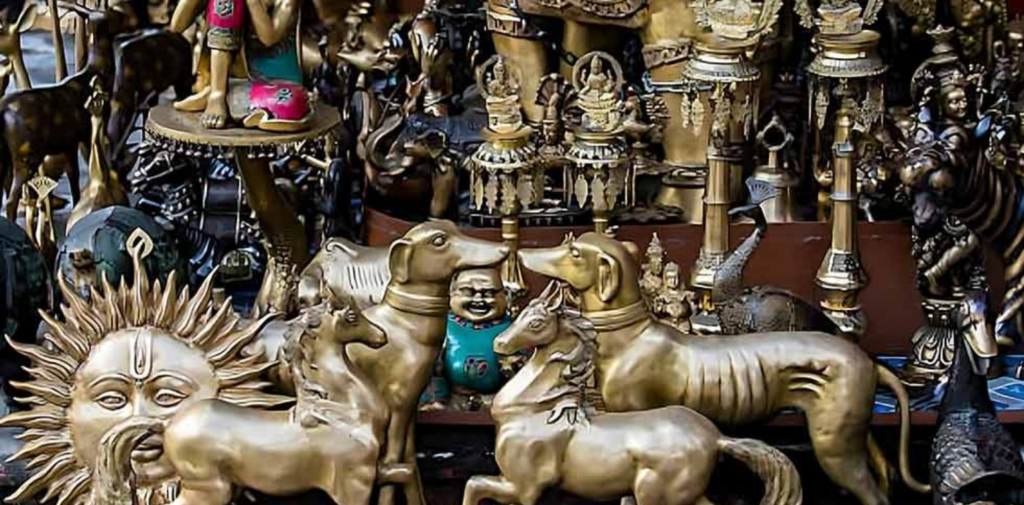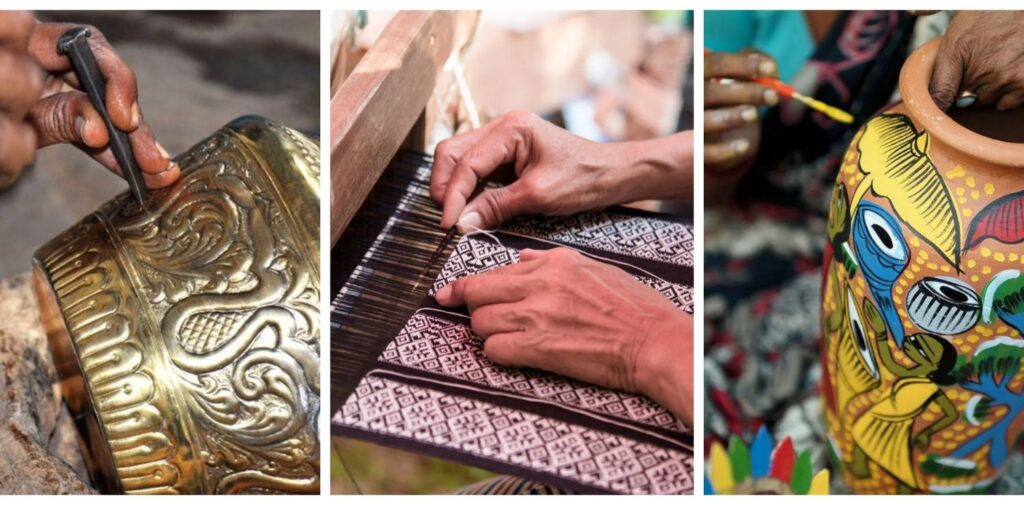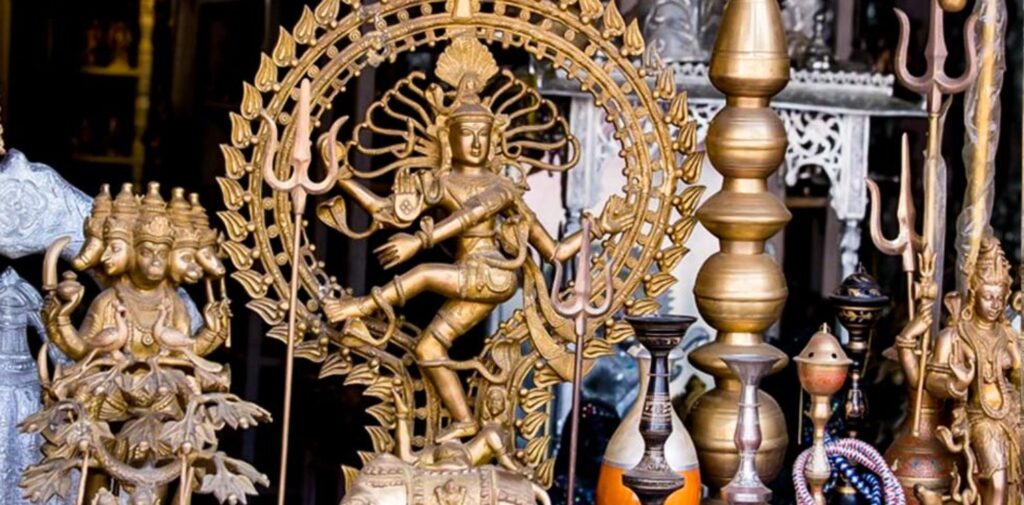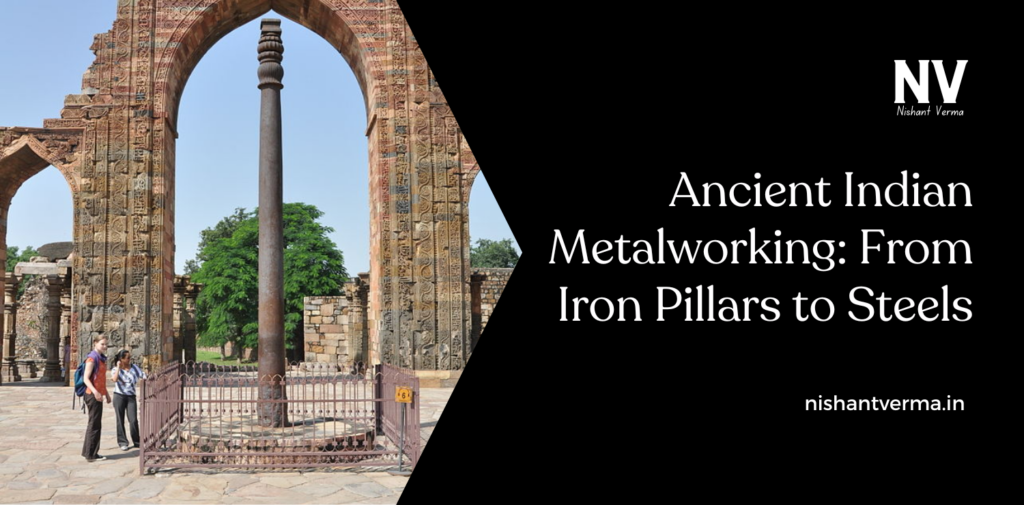India has a long and fascinating history of Ancient Indian Metalworking, dating back thousands of years. The ancient Indians were highly skilled in working with metals like copper, bronze, iron, and even steel. They created amazing structures, weapons, and tools that showed their advanced knowledge of metal. From the famous Iron Pillars to the strong steels used in swords and tools, metalworking played an important role in India’s ancient history. Let’s explore this exciting journey of metalworking in ancient India.
Early Discoveries and Metal Usage in India
In ancient India, people started using metals long before they knew how to extract them from ores. They initially used metals that were found naturally in a pure form, like gold, silver, and copper. These metals were shaped into jewelry, ornaments, and other useful objects. As time passed, people learned how to mine and extract metals from ores, which helped them make stronger and more useful tools.
One of the first metals to be widely used in India was copper. The people of the Indus Valley Civilization (around 2500 BCE) are known for their skill in making copper tools and statues. They made simple tools like knives, axes, and ploughs, and also created beautiful figurines and jewelry. This early metalworking was an important step in the development of Indian civilization.

The Iron Age: Rise of Iron and Steel
By around 1000 BCE, iron became the most important metal in India. The discovery of iron revolutionized metalworking because iron is stronger and more durable than copper and bronze. This period, known as the Iron Age, saw the creation of many iron tools, weapons, and even large structures.
India became famous for its high-quality iron, especially during the reign of the Maurya and Gupta Empires. One of the greatest examples of ancient Indian ironworking is the Iron Pillar of Delhi. This massive iron pillar stands at about 7 meters tall and weighs around 6 tons. It is known for its incredible resistance to rust and corrosion, even after more than 1,600 years of exposure to the elements.
The Iron Pillar was made using a special method of forging iron, which allowed it to be both strong and resistant to the effects of weather. This advanced technique shows how skilled ancient Indian metallurgists were. The fact that the pillar has survived without significant rusting for so long is a testament to the high level of knowledge about metals that existed in ancient India.
The Secret of Making Strong Iron: Wootz Steel
While iron was important, it was steel that truly set ancient Indian metalworking apart from the rest of the world. Steel is made by adding carbon to iron, which makes it much stronger and more flexible. In India, metallurgists learned to make a special type of steel called wootz steel.
Wootz steel was incredibly strong and durable. It was used to create weapons like swords, knives, and daggers, which were known for their sharpness and strength. Wootz steel was so famous that it was exported to other parts of the world, including the Middle East and Europe. The secret of making wootz steel was a closely guarded technique, passed down from generation to generation.
Wootz steel was created by melting iron with charcoal and other materials in a special furnace. This process caused the iron to absorb carbon, turning it into steel. The quality of wootz steel was so high that it could be sharpened to an almost razor-like edge, making it ideal for weapons like swords and knives. The famous Damascus steel used in the Middle East was made using a similar technique to wootz steel, which shows how important Indian metalworking was to the rest of the world.

The Role of Ancient Indian Metalworking in Daily Life
Metalworking in ancient India wasn’t just about creating weapons. It also played a key role in daily life. People used metal for making tools, household items, and decorations. Metal was used to make agricultural tools like plows and sickles, which helped farmers in their work. Metal was also used to create coins for trade, jewelry for personal adornment, and even statues of gods for religious purposes.
The advanced techniques of metalworking also helped in the construction of large buildings and temples. For example, the famous temples of South India, like the ones at Khajuraho and Hampi, were built using metal fittings and decorations. These metals were not only functional but also added beauty to the structures.
The Legacy of Ancient Indian Metalworking
The legacy of ancient Indian metalworking is still visible today. Many modern techniques of metalworking can be traced back to the skills developed by ancient Indian metallurgists. The methods used to make iron, steel, and other metals were shared with other cultures and helped shape the development of metalworking in the world.
The wootz steel, for example, was used by several ancient civilizations to create high-quality swords and weapons. Even today, Indian metalworking techniques are admired for their precision and skill. The Iron Pillar in Delhi continues to stand as a symbol of India’s ancient technological achievements, showing how advanced the country was in its understanding of materials and metallurgy.

Why Ancient Indian Metalworking is Important
Understanding the history of ancient Indian metalworking is important because it teaches us how advanced and knowledgeable ancient Indian civilizations were. It shows us that India was not only rich in culture, religion, and philosophy but also in science and technology. The ability to make strong and durable metals helped ancient Indians build powerful kingdoms, defend their lands, and improve their daily lives.
The history of metalworking in India also reminds us of how knowledge and skills are passed down from one generation to the next. The metallurgists of ancient India worked hard to perfect their craft, and their discoveries continue to influence modern science and technology.
Conclusion
Ancient Indian metalworking was a remarkable achievement that helped shape the course of history. From the discovery of iron and the creation of wootz steel to the building of grand temples and monuments, ancient Indian metallurgists showed incredible skill and knowledge. Their work continues to inspire us today, reminding us of the power of innovation, craftsmanship, and the importance of passing down knowledge to future generations.
So, the next time you see an iron structure, a shiny steel knife, or even a beautiful piece of jewelry, remember that the roots of these materials can be traced back to the brilliant minds of ancient India. The legacy of Ancient Indian Metalworking is one of the many treasures of this great civilization.




